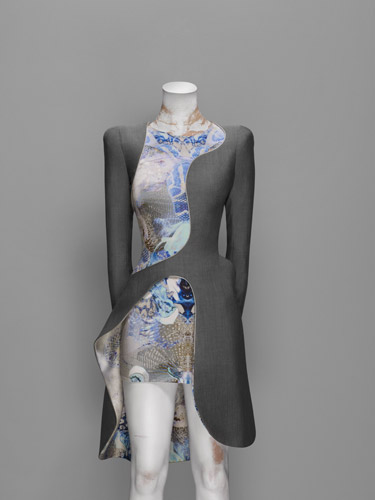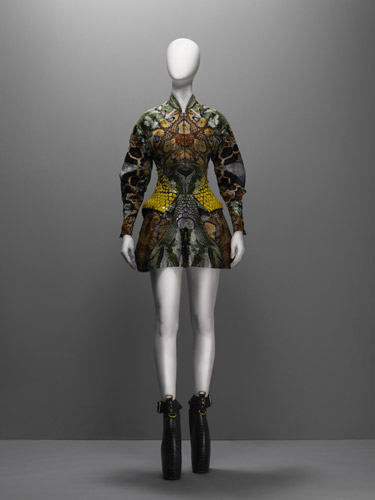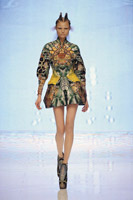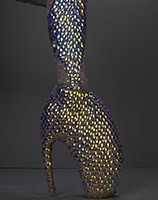Dress, Plato’s Atlantis, spring/summer 2010
Alexander McQueen (British, 1969–2010)
Dress
Plato’s Atlantis, spring/summer 2010
Gray wool and silk/synthetic knit printed in jellyfish pattern
Courtesy of Alexander McQueen
Photograph © Sølve Sundsbø / Art + Commerce
Audio clip: Adobe Flash Player (version 9 or above) is required to play this audio clip. Download the latest version here. You also need to have JavaScript enabled in your browser.
Andrew Bolton: As you can see here, McQueen designed many permutations of the frock coat. He made this one for the 2010 collection, Plato’s Atlantis. Here we have Sarah Burton—who was McQueen’s head designer for fourteen years—talk about the collection.
Sarah Burton: He was interested in this concept of hybrid. With those tailored pieces, specifically; they had tailored arms, but the body was jersey. So there’s this weird sort of hybrid and juxtapositioning of different fabrics and how would they react together.
So he took these jersey shifts, put them on the mannequin, and then cut into all of these tailored pieces and morphed the two together. When you watched him cut on the stand, it gave you goose bumps because he had a sort of bravery. He was never afraid of anything. It was never, “Oh, this is not going to work.” He was so confident and so clear about the way that he was doing things, and that was, I think . . . part of his genius is his knowledge of every single level of making clothes.
I remember on the last collection he did, he actually—on a piece of felt with a piece of chalk—chalked out a frock coat by eye, cut it out, and pinned it on a dummy and it was a perfect fit. That’s how familiar he was with that piece of clothing.
In McQueen’s Words
“I like to think of myself as a plastic surgeon with a knife.”
Wynn, Winter 2007/08
“With me, metamorphosis is a bit like plastic surgery, but less drastic. I try to have the same effect with my clothes. But ultimately I do this to transform mentalities more than the body. I try and modify fashion like a scientist by offering what is relevant to today and what will continue to be so tomorrow.”
Numéro, December 2007


 Vogue iPad app
Vogue iPad app





